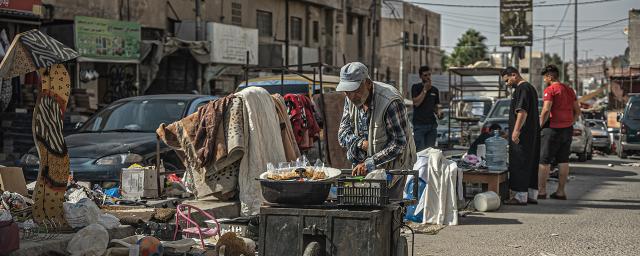
A man sells beans in Ein al Basha vegetable market, Amman, Jordan. Photo: Pablo Tosco/Oxfam
To respond to the outbreak of the COVID-19 pandemic, the International Monetary Fund (IMF) has committed its $1 trillion lending capacity and as of March 15, 2022, had provided $171 billion worth of financial assistance to 90 countries around the world. Oxfam has tracked and reviewed the publicly available IMF COVID-19 loan documents associated with all 130 loans made to these countries as of March 15 2022.
In the first year of the pandemic, between March 23 2020 and March 15 2021, the IMF approved 107 loans to 85 countries. Oxfam reviewed these loans, extracted, and collated select data from each loan document relevant to spending, accountability, and proposed recovery measures. Oxfam also reviewed the Article IV reports, published between September 2020 and March 2021, of countries which received loans from the Fund and included relevant data from those as well.
In the second year of the pandemic, between March 16 2021 and March 15 2022, the IMF approved a further 23 loans to 22 countries. Oxfam reviewed these loans, extracted, and collated select data from each loan document relevant specifically to spending and domestic revenue mobilization measures being encouraged or required, with a focus on fiscal consolidation measures, often referred to as austerity measures, as well as other datapoints that may be of interest to stakeholders.
Oxfam has reviewed all loan documents released after board approval of financial assistance request of countries and extracted policy recommendations and requirements. Specifically, the Year 2 tracker organizes the data by countries receiving loans (column A), region (column B), amount of the loan (column C), types of financing instruments the fund has employed (column D), date of board approval (column E), policies featured in the loan documents in relation to fiscal consolidation (column F), tax and revenue mobilization (column G), wage bill (column H), general expenditure reduction measures (column I), social spending (column J), subsidies (column K), gender (column L), and Special Drawing Rights (SDRs) usage (column M). The data is presented in the form of an excel document in order to enable users, especially researchers and activists, to manipulate and filter the data according to their specific needs.
There is an overwhelming amount of information available on the IMF’s website and associated with each loan. This particular dataset has been compiled for the benefit of persons and institutions wanting a snapshot view of what governments are borrowing, what they intend to do with these funds, and more importantly what policy measures the IMF is encouraging or requiring countries to take during the pandemic and in the recovery period.
The intention is to shine more light on these agreements, in particular to highlight austerity measures pushed by the IMF, find trends like these pieces from October 2020, August 2021 and April 2022, provide citizens and civil society with a starter-kit to understand better what policies are included in these loans, and be able to hold governments and the IMF more accountable.
All text provided in this tracker are direct excerpts manually selected and extracted from publicly available official IMF reports. Every effort has been made to verify the accuracy of the information contained in this dataset and all information is believed to be correct as of March 15 2022.
Note: An earlier version of these datasets remains available here which was correct as of September 2020.